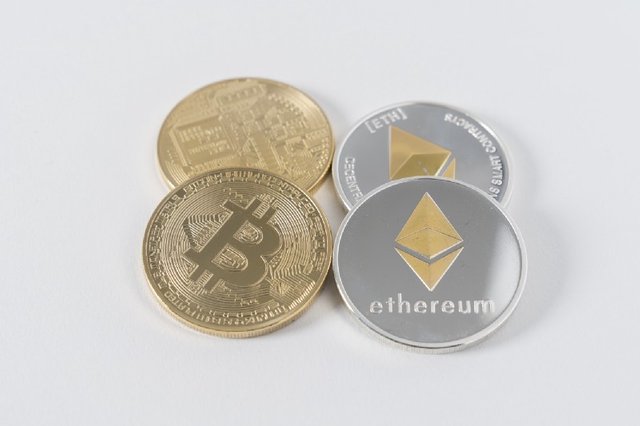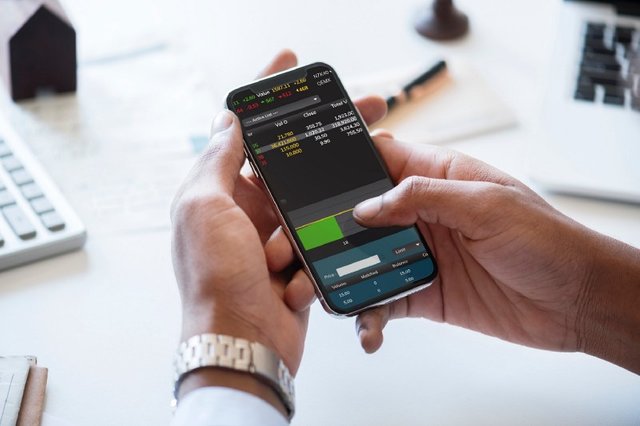Crypto Asset Classes
A lot of people have written about classification and categorization of crypto assets. Security tokens, utility tokens, cryptocurrencies, exchanges, appcoins, and altcoins are all labels in an effort to organize a collection of similar crypto assets.
Some people, like Tom Lee (whom I respect very much) of Fundstrat Global Advisors, break the collections into cohorts based on how they trade — more like sectors. For example, Lee breaks the sectors into commodities, platforms, privacy, exchanges and stablecoins. He does this because these cohorts trade similarly, and he can model trading action based on their collective attributes. Sector definition is important, but I think there’s one higher level of abstraction needed. That’s crypto asset classes. Commodities, platforms and stablecoins are of a different classification type than privacy coins and exchanges, and I would separate them as such. That way, we’ll have both asset classes and sectors like we do with traditional financial markets.
Others, like the general partners at Multicoin Capital, break the collections into 3 major cohorts: currencies (stores of value); security tokens (tokens backed by real-world assets); and utility tokens (work tokens). They’ve settled on this configuration because they think each has a separate and distinct valuation model. They outline a valuation model for currencies and work tokens. You’ll notice that they don’t distinguish platform coins from cryptocurrencies as they believe platform coins will be held for their own specific store of value.
Some labels have just come to us through nomenclature “inheritance” which I don’t think is very helpful. An example of this is the moniker “altcoins”. It can be confusing as to exactly what an altcoin is and whether it can mean every other coin that is not bitcoin or ether. That’s a large subset that really doesn’t do anyone much good.
I think of the crypto asset class superset a little differently. I would classify the mutually-exclusive subsets based on logical groupings. I see eight distinct crypto asset classes — core, currencies, platforms, utility tokens, security tokens, commodities, appcoins and stable coins.
I use these crypto asset classes because members of the set have similar properties. They have similar functional goals and react to the market in a similar fashion. They have similar valuation models, compete with one another in some form or operate similarly within their set, have similar regulatory risk and generally define the highest subset under the umbrella crypto asset superset.
Fundamentally, I’m coming at this as an investor. I want to have an asset allocation strategy, and then have multiple positions of the best coins I think will produce a return for that crypto asset class. I want to be able to manage target asset class percentages. I don’t want to commingle currencies, utility tokens, platforms and appcoins in the same asset class because it does not provide me with a satisfactory level of precision to allocate across the total market. The asset classes may have similar valuation models, but their stated goal and their functions are different. While all crypto assets are highly correlated, as the market matures and valuation models take hold this should change. From an investor’s perspective, it makes sense to create 7–12 classes that are mutually exclusive while also being exhaustively comprehensive to classify members in the entire crypto asset superset.
Core / Reserve
The core crypto asset class contains just two — bitcoin and ether. I’m pulling Ethereum out of the platforms crypto asset class for now because it has special properties. Ultimately, investors need to convert their fiat currency into either bitcoin or ether to buy any other coin or token. These are considered core reserve crypto assets. While bitcoin and ether are different in many ways, they both have a market quality similar to one another and not shared by any other crypto assets. They are both mined and have set monetary policies. Cogent arguments have been made that bitcoin is its own distinct crypto asset class because its deflationary cryptocurrency with limited supply. The Ethereum network is a platform with different supply/demand mechanics. However, as long as these two crypto assets hold this special dynamic within the market, I’m going to combine them into their own special asset class.
Let’s take a page from the financial analog. The entire current global asset structure starts with gold and builds from there. From gold, countries manage their fiat money supplies. It used to be that the amount of gold a country owned affected how much of its currency supply could be printed. From currencies, commodities are priced and fixed income (bonds) are created to produce a return on capital in the financial market. Equity can be created as a security, after pricing resources (commodities) and calculating interest rates and risk. While gold is classified as a commodity (for legal and other reasons), it’s treated as both a commodity and a currency. It has special properties which convince asset allocators and investors that gold is an asset class of its own. I agree. The same is true for the core crypto assets.
Cryptocurrencies
Cryptocurrencies’ core benefit to the market is to be a digital form of payment. The fundamental question to test whether or not a coin is a currency asks “Is the primary use as a medium of exchange and/or a store of value?” That is, does it digitally fulfill on a currency’s ability to be:
- a medium of exchange;
- a store of value; and, ultimately,
- a unit of account.
While each cryptocurrency is at various stages of delivering on these, that is the primary goal or function. Cryptocurrencies collectively would have similar regulatory risk as a collection compared against other asset classes, i.e., utility tokens.
Crypto currency has a similar value function as standard currency. The Equation of Exchange, M x V= P x Q, is applicable here. The valuation model of cryptocurrency is fundamentally based on unit costs and, most importantly, on the velocity of money. As money is used faster throughout the system, the value of that monetary system increases.
Cryptocurrencies are all trying to address the same issues with payment. Cryptocurrencies are grouped logically, and there is no superset between this asset class and the crypto asset umbrella superset. Therefore cryptocurrency is its own crypto asset class.
Examples of cryptocurrencies are: Bitcoin, Bitcoin Cash, Monero and Dash.
Platforms
Platforms are going to be one of the most interesting cryptos because this is where smart contracts and programmatic money are going to exist. If a blockchain wants to implement smart contracts in some form, then it’s probably in the platform asset class. Programmatic enforcement of legal and financial contracts will transform the shape and velocity of what’s possible globally. We’re already seeing a fundamental change in what’s possible with the accumulation, transference and store of value.
To understand what’s possible, let’s paint a picture of the future in 10 years. All corporations will effectively be smart contracts. Governance, voting, supply chain and contract enforcement will fundamentally change because we are going to be able to programmatically store and transfer value based on some previously agreed-upon logic. Value will be created globally just from the transparency and predictability of contract execution. We will be able to see exactly where our food comes from. We will be able to trust digital voting has not been tampered with. Land title disputes will no longer exist.
Platforms will work to provide some of the fundamental building blocks of blockchain, like smart contracts, immutability and decentralization. However, they are distinct from cryptocurrency in their stated goal and function. They have different regulatory risk than other crypto asset classes. Platforms are closer to legal contracts than currency in the analog paradigm. Their valuation model is primarily based on network effects whereas cryptocurrencies are valued on the velocity of money and the equation of exchange. They are distinct from all other crypto asset classes, and thus they are an asset class of their own.
Examples of Platforms are: EOS, NEO, Cardano & IOTA.
Utility Tokens
Utility tokens focus on a providing a service layer. They provide a function or a resource to address a specific need. They have partners and contributors who create applications on top of the protocol or create applications that use the utility token. Utility tokens valuation model is primarily based on network effects but will be influenced by supply/demand. Utility tokens run on a platform blockchain they do not directly manage or control. Most utility tokens to date run on the Ethereum platform. Utility tokens are distinct from platforms in that they aren’t providing a lower level or horizontal functionality built on top of a blockchain and they are distinct from appcoins because their stated functional goal is not limited to one application or service. Utility tokens may work on one blockchain for now, but in the future the utility tokens may operate on multiple networks to serve multiple app coins.
Examples of Utility Tokens are: BAT, Civic, OmiseGO and Tron.
Security Tokens
Security tokens are different from utility tokens and platforms by their functional nature and goal as well as by their regulatory risk profile. They derive their value from being linked to an external asset and are likely subject to federal securities regulations. The valuation model of a security token directly relates to valuing the underlying asset linked to the token. These tokens will have a much bigger play and their growth stage in 2018 and beyond. I predict within the next 12 months there will be companies that want to have their equity trade as security tokens on a crypto exchange. We’ll also see real estate secured on a blockchain with a security token. Security tokens are distinct from all other crypto asset classes because of their link to an external, real-world asset.
An example of a Security Tokens is: BCAP.
Crypto Commodities
Commodities aim to provide a direct consumable resource. This is distinct from the platform asset class in that it’s vertical/industry specific and it seeks to exchange based on a specific subset of resources. Those resources could include disk space, computing power or other consumable services. Commodities are distinct from utility tokens in that their valuation model is mostly influenced by the supply and demand of a given resource. Crypto-commodities run their own blockchain which is different than how utility tokens operate. This is one of the main mechanics to how supply and demand affect price. Price surges and other scarcity risks could occur more frequently with commodities than may affect other asset classes like utility tokens or appcoins. Though, they will have less regulatory risk because of the work or resource exchanged. Their valuation model is influenced by network effects but the valuation model is different than currencies which are mostly valued by the velocity of money and platforms which are valued mostly by network effects.
Examples of Crypto-commodities are: STORJ, FileCoin and Golem.
Appcoins
Appcoins work on one specific network to provide a specific vertical application service. They are distinct from commodities in that their supply is not constrained like a commodity or resource that is consumed. They are different from platforms because they are vertical and application-specific. They aren’t providing a platform or protocol for others to build upon. Their goal and utility is distinct in focusing on their own narrow ecosystem. They have a many-to-one relationship in their network model whereas utility tokens have a many-to-many relationship. Appcoins are the most narrow applications and therefore levered to a specific use case as being a “pure play” to a particular application or service. As a result, their valuation model will be distinct from commodities, currencies or platforms.
Examples of Appcoins are: Steem, Binance and SALT.
Stablecoins
Stablecoins are present to provide a stable store of value. Currently, there is one major player within this crypto asset class. That is Tether. However, that will change in the future. Currently there are several projects pursuing various methods on how they will achieve a stable coin. I recommend thisarticle from Multicoin Capital to learn more about stablecoins. This is a new and burgeoning asset class, and we will distinguish it on its own due to its stated goal and functional nature.
Examples of Stablecoins: Tether, Maker, Basecoin & Digix
Conclusion
Hopefully, this makes a case for a good classification model of crypto asset classes. My goal is to help investors build a portfolio with appropriate asset allocation to improve your risk-adjusted returns. To achieve that, we need a good framework for how to think about crypto asset classes. If Modern Portfolio Theory (MPT) suggests a return can be made only 3 ways — asset allocation, security selection and market timing — then we want a structure to help guide and enforce how we think about asset allocation. A comprehensive crypto asset class model will help in this effort. I’ll leave selection and market timing to other upcoming articles.
Happy Hunting!
Jake
Disclaimer: The above references an opinion and is for information purposes only. It is not intended to be investment advice. Please do your own homework.
If you enjoyed this article, like it to help others find it! For more, join us on Facebook and Twitter .







Congratulations @jakeryan! You have received a personal award!
Click on the badge to view your Board of Honor.
Do not miss the last post from @steemitboard!
Participate in the SteemitBoard World Cup Contest!
Collect World Cup badges and win free SBD
Support the Gold Sponsors of the contest: @good-karma and @lukestokes